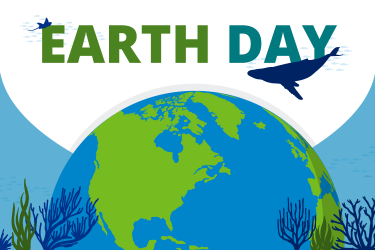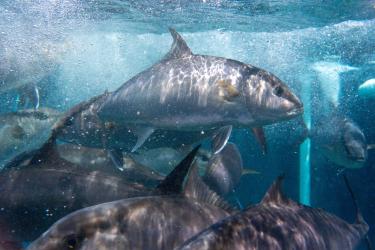Fishing vessels can “go dark” by turning off Automatic Identification System (AIS) transponders that broadcast their location to satellites and terrestrial receivers. What they do during those invisible hours has long been a mystery.
New research funded in part by NOAA’s Office of Law Enforcement analyzes where, when, and potentially why vessels disable their AIS broadcasts. “This is the first time scientists have been able to quantify the global footprint and scale of AIS disabling and make inferences on what vessels do when they go “dark,” said James Landon, Director of NOAA’s Office of Law Enforcement. “It offers important insights into vessel activity in coastal Exclusive Economic Zones and on the high seas.”
Assessing Billions of Signals
Researchers from NOAA Fisheries, the University of California Santa Cruz, and Global Fishing Watch analyzed more than 28 billion AIS signals from 2017 to 2019. They studied signals from vessels more than 50 nautical miles from shore. The team identified more than 55,000 examples of vessels disabling their AIS signals, breaking them down by location, fishery, and home country. The researchers found that disabled AIS transponders obscure about 6 percent of all global fishing vessel activity.
The team used a powerful machine learning technique to better understand why vessels intentionally disable their AIS devices. The machine learning models revealed that vessels frequently disabled their AIS devices adjacent to Exclusive Economic Zones and the high seas. EEZs are geopolitical boundaries that delineate countries’ domestic waters where a country exercises control over its fisheries resources. AIS disabling was particularly common next to EEZs with contested boundaries and EEZs with rich fishing grounds and limited management oversight. These are both areas of concern for illegal, unreported, and unregulated (IUU) fishing.
The team found that another strong driver of AIS disabling was transshipment. Transshipment is the at-sea transfer of catch, personnel, and supplies between fishing vessels and refrigerated cargo vessels. It can be legal and beneficial—but when poorly monitored, can serve as a way to launder illegally caught seafood. It can also increase the potential for human rights violations due to the length of time vessels are able to remain at sea.
Lessons Learned
While the models produced by the researchers indicated possible links between AIS disabling and IUU fishing, that was not always the case. In fact, vessels frequently disabled their devices in productive fishing grounds, likely to hide their locations from competitors. Vessels also disabled their devices in historically dangerous waters prone to piracy likely to avoid attacks.
This research is not definitive evidence that vessels acted illegally. However, it does provide insightful information about where, when, and what types of vessels may most likely try to disable their AIS transponder. The research also provides law enforcement with another tool in the fight against IUU fishing but also underscores the limitation of over-reliance on AIS tracking. We will continue to use and explore a variety of methods and technologies to deter and detect IUU fishing. Our goal is to continue to implement an effective toolkit that protects law-abiding fishermen, strengthens food security, and promotes sustainable fisheries.



